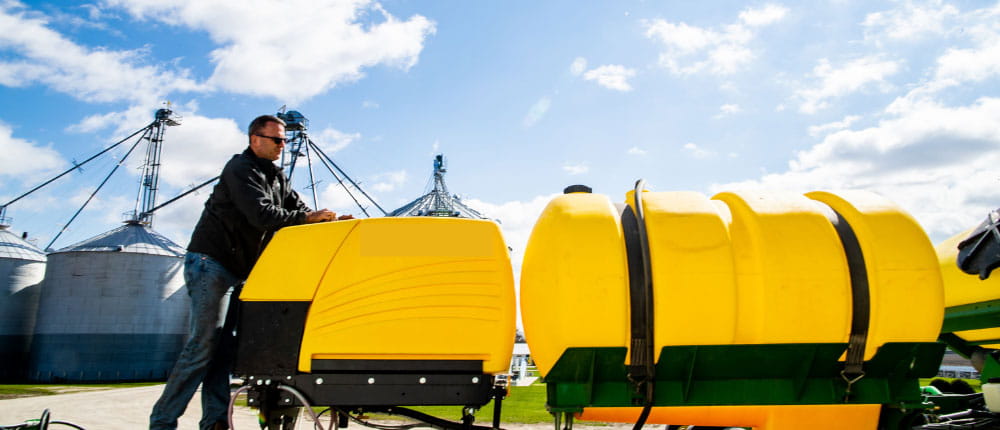Surfactants, also known as wetter-spreaders or wetting agents, fall under the activator adjuvant group and help to spread pesticide by reducing the surface tension between the spray solution and the target surface. This allows water droplets to spread across the weed’s leaf – for example, increasing the contact area for better absorption. Surfactants are one of the most recommended adjuvants on herbicide labels, especially for water-soluble and systemic herbicides.
Surfactants like to spread themselves out over the top of a leaf surface and find the smallest little crack to work themselves into the plant. A basic surfactant molecule consists of a hydrophilic head, or water loving head, and a lipophilic, or oil loving tail. Once the hydrophilic head is inside of the water droplet, the lipophilic tail protrudes through the surface, decreasing the surface tension of the water droplet. The more molecules that are in the tank, the more surface tension is reduced.

Surfactants are categorized by ionic charge. Non-ionic surfactants (NIS) have no ionic charge and are the most common type required on labels. Organo-silicone surfactants are a newer type of surfactant and are often called “super-spreaders” due to their ability to provide greater spreading of spray solutions. Other types include cationic surfactants (positively charged) and anionic surfactants (negatively charged), but they are rarely mentioned on labels.
Understanding Surfactant Load
The more surfactant load present in a product the more effective it will be at reducing surface tension. Be sure to read the label to make a distinction between the total percent of active ingredient and the actual surfactant load, as solvents also contribute to the percent of active ingredient. For example, 80-20 NIS is made up of 80% active ingredient and 20% inactive ingredient (water). However, this does not mean that the product contains an 80% surfactant load, since both surfactants and solvents contribute to the active ingredient percent. As shown in the figure below, both surfactants B & C are 80-20 NIS products, however surfactant B has twice as much surfactant load as surfactant C. Always read the label carefully to see how much each load is contributing to the active ingredient percent.

Surfactant Ingredients
Within each surfactant are specific ingredients that provide the properties that make a surfactant work. By understanding surfactant ingredients, informed decisions can be made on which surfactant is right for a specific operation and price point.

Set the bar high with nonionic surfactants

Last Chance™ Pro improves the uptake, translocation, and efficacy of most herbicides. The formulation meets the surfactant level requirements of most active ingredient labels in the industry that require or recommend the use of a nonionic surfactant (NIS).
- Formulated for increased performance over that of a standard adjuvant program.
- Improves uptake, translocation, and efficacy of herbicide applications.
- Low use rate and additional defoamer allows for convenient mixing and handling.
When selecting adjuvants, the decision should always be based on agronomically sound information and customer needs, including the site to be sprayed, the target pest, and the equipment to be used.
To learn more about adjuvants or Last Chance Pro, contact your CHS agronomy representative.




